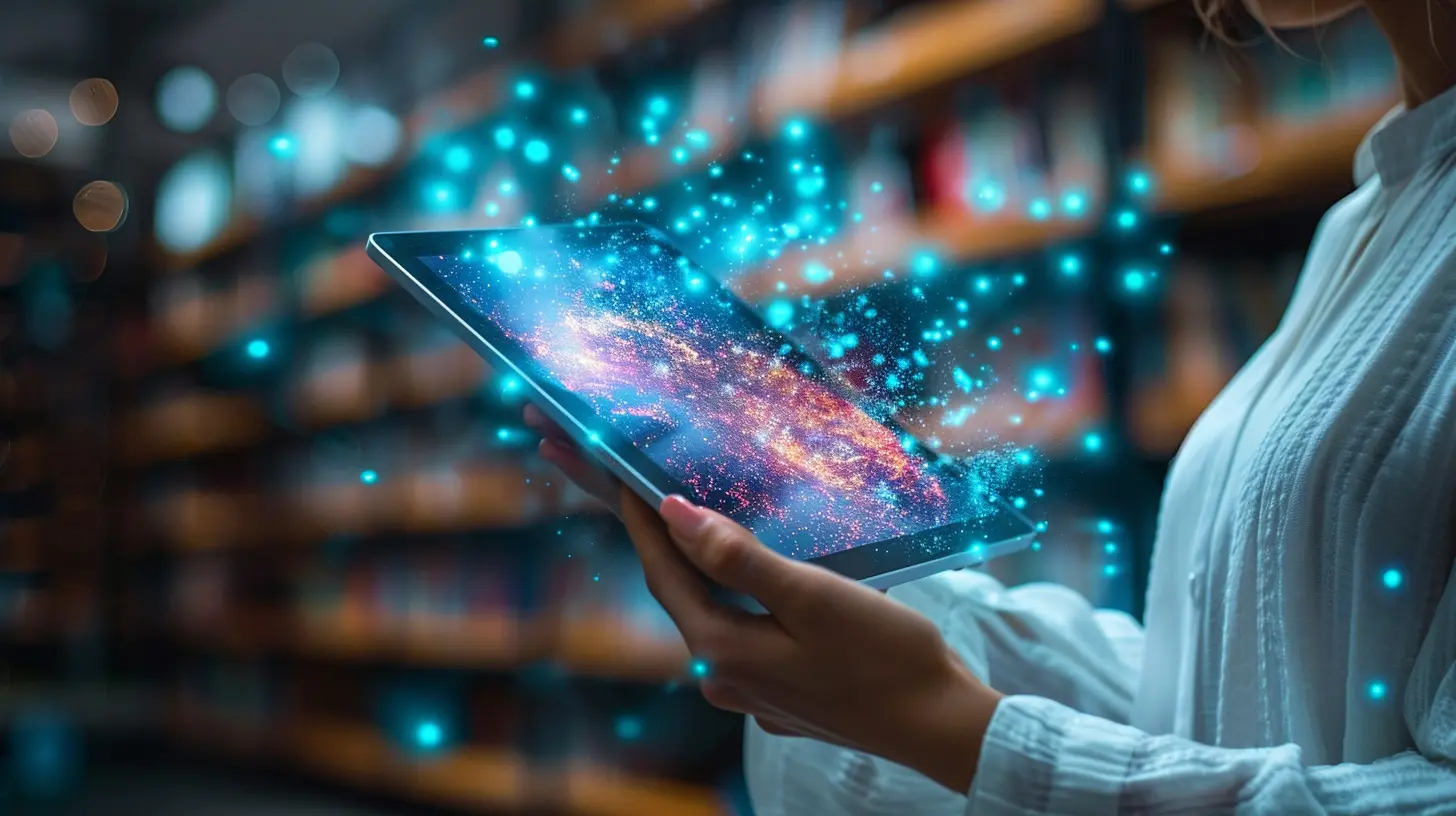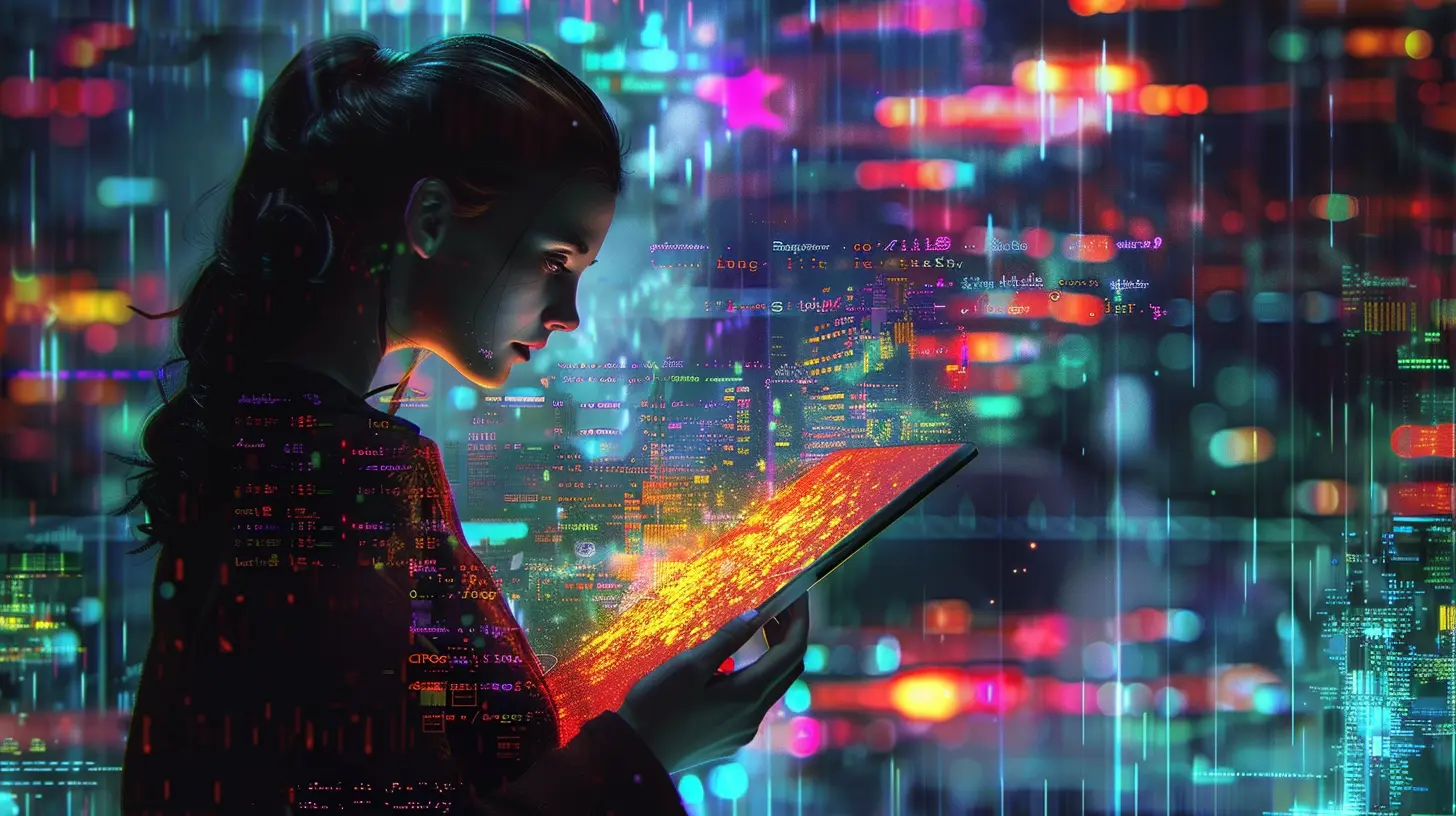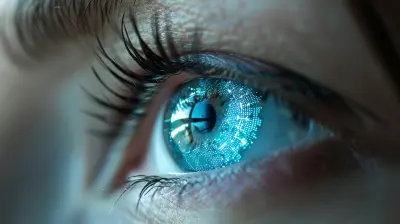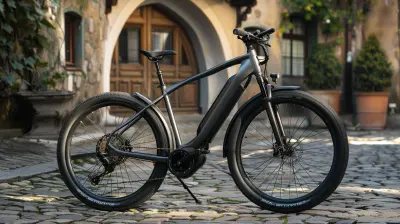How E-Readers Are Evolving with New Tech
22 November 2024
Remember when e-readers first hit the market? They were revolutionary, giving us the freedom to carry an entire library in the palm of our hands. No more lugging around heavy books or worrying about dog-eared pages. Fast forward to today, and e-readers have come a long way. From better screens to longer battery life, e-readers are evolving at a rapid pace thanks to new tech. But how exactly are e-readers changing, and what does the future hold for these digital reading devices?
Let’s dive into the evolution of e-readers and explore how they’re embracing new tech to elevate the reading experience.

The Humble Beginnings of E-Readers
Before we get into the nitty-gritty of modern e-readers, it’s worth taking a quick trip down memory lane. E-readers first gained mainstream popularity with the launch of Amazon’s Kindle in 2007. Back then, the Kindle was a game changer. It was lightweight, portable, and had a screen that mimicked the look of paper—perfect for reading in bright sunlight. It was so new and exciting that people didn’t mind the clunky buttons or the basic monochrome display.But with time, readers demanded more. They wanted sharper screens, better battery life, and even the ability to read in the dark. And believe it or not, the tech world delivered.

The Rise of E-Ink Technology
One of the biggest breakthroughs that shaped the evolution of e-readers was E-Ink technology. If you’ve ever used an e-reader, you’ve experienced the magic of an E-Ink display, even if you didn’t realize it at the time. Unlike traditional LCD or OLED screens, E-Ink uses microcapsules filled with black and white pigments that rearrange themselves to display text and images. This creates a screen that looks remarkably like paper.Why is this important? Well, E-Ink screens are easier on the eyes compared to regular screens. They don’t emit blue light, which is notorious for causing eye strain and messing with your sleep patterns. Plus, E-Ink screens consume very little power, which means e-readers can last weeks on a single charge. That’s something even your smartphone can’t boast about!
But here’s the cool part: E-Ink technology is evolving too.
Color E-Ink Displays
For years, e-readers were limited to black-and-white displays. While that’s fine for pure reading, it was a problem for people who wanted to enjoy graphic novels, magazines, or textbooks with images. Enter color E-Ink displays.Color E-Ink has been around for a few years, but the latest advancements have made it more vibrant and practical. Devices like the PocketBook Color and Onyx Boox Nova3 Color are bringing the joy of reading in full color to e-readers. With color E-Ink technology, users can now enjoy a wider variety of content without giving up the battery-saving and eye-friendly benefits of E-Ink.

Flexible and Foldable E-Readers
Think e-readers are stuck in their stiff, rectangular form forever? Think again. Thanks to advancements in flexible display technology, we’re on the cusp of seeing foldable e-readers. These devices use bendable E-Ink screens that can be folded like a book or rolled up for easy storage.Imagine folding your e-reader and tucking it into your pocket like a piece of paper. Sounds like something out of a sci-fi movie, right? But companies like Royole and E-Ink Holdings are already developing prototypes of flexible and rollable displays, signaling a future where e-readers become even more portable and versatile.

Enhanced Battery Life with Solar Power
If there’s one thing that’s always been a selling point for e-readers, it’s their impressive battery life. Unlike smartphones, which need to be charged daily (sometimes even multiple times a day), most e-readers can last for weeks on a single charge. But what if you never had to charge your e-reader at all?That’s where solar-powered e-readers come into play. Some manufacturers are experimenting with e-readers that have built-in solar panels, allowing the device to recharge itself using sunlight. Imagine reading on the beach or in the park, knowing your e-reader is soaking up energy from the sun and keeping itself charged.
While solar-powered e-readers aren’t mainstream just yet, they represent a potential game-changer for avid readers who don’t want to be tethered to a charger.
AI and Smart Features for Personalized Reading
Artificial Intelligence (AI) is creeping into every corner of our lives, and e-readers are no exception. Modern e-readers like the Amazon Kindle and Kobo devices are starting to incorporate AI-driven features that make reading more personalized and interactive.AI-Driven Recommendations
You’ve probably noticed that your e-reader offers book recommendations based on your reading history. But these recommendations are becoming smarter and more tailored thanks to AI algorithms. Just like Netflix suggests movies based on what you’ve watched, e-readers are learning from your reading habits and offering suggestions that match your preferences. This not only helps you discover new books but also enhances your overall reading experience.Voice Control and Accessibility
Voice-controlled assistants like Alexa and Google Assistant are making their way into e-readers as well. Imagine being able to ask your Kindle, "What’s the weather today?" or "Read the next chapter aloud." For readers with visual impairments or disabilities, voice-controlled features can make e-readers more accessible and user-friendly.Plus, with the rise of text-to-speech technology, e-readers are starting to blur the line between reading and listening. You can switch from reading a book to having it read aloud to you, making it easier to enjoy your favorite books while multitasking.
The Integration of Audiobooks
Speaking of listening, it’s impossible to ignore the impact of audiobooks on the e-reader market. Platforms like Audible have exploded in popularity, and e-reader manufacturers have taken notice. Many modern e-readers now come with audiobook support, allowing you to switch seamlessly between reading and listening.For example, Amazon’s Kindle devices offer Whispersync technology, which lets you sync between the audiobook and e-book versions of a title. So, if you’re reading on your Kindle and need to step away, you can switch to the audiobook version and pick up exactly where you left off. It’s like having your own personal storyteller on standby.
Waterproof E-Readers for the Adventurous Reader
Raise your hand if you’ve ever worried about dropping your e-reader in the tub or splashing it by the pool. You’re not alone! But fear not—manufacturers have heard your cries, and waterproof e-readers are now a thing.Devices like the Kindle Paperwhite and Kobo Forma boast IPX8 water resistance, meaning they can survive being submerged in water for extended periods. So whether you’re reading by the pool or soaking in the bath, you can relax knowing your e-reader is safe from accidental splashes.
The Future of E-Readers: What’s Next?
So, where do we go from here? While it’s impossible to predict the future with certainty, one thing’s for sure: e-readers will continue to evolve as technology advances. Some potential trends we might see in the coming years include:1. 5G Connectivity
Right now, most e-readers rely on Wi-Fi or 4G to download content. But with 5G becoming more widespread, future e-readers could have faster download speeds, allowing you to grab a new book in seconds, even without Wi-Fi.2. Holographic Displays
Sounds far-fetched? Maybe. But with companies like Samsung and Microsoft investing in holographic display technology, we could see e-readers that project 3D images or text in the air. It’s the kind of futuristic tech that could redefine the way we interact with digital books.3. AI-Generated Content
We’re already seeing AI-generated articles and short stories. In the future, your e-reader could use AI to create personalized stories based on your preferences. Want a mystery novel set in a tropical locale? Your e-reader could whip one up just for you.4. Interactive and Multimedia Content
E-readers could evolve to support more interactive and multimedia content. Imagine reading a novel where the background music changes based on the mood of the scene or where you can click on a character’s name to access a short video about their backstory.Conclusion: Are You Ready for the Future of E-Readers?
E-readers have come a long way from their humble beginnings. Thanks to innovations in E-Ink technology, AI integration, solar power, and more, the future looks bright for book lovers who prefer their libraries in digital form. Whether you’re a casual reader or a hardcore bibliophile, e-readers are evolving to meet your needs in ways that were once unimaginable.So, the next time you pick up your trusty Kindle or Kobo, take a moment to appreciate just how far we’ve come—and get excited about where we’re headed next. The future of reading is here, and it’s more tech-savvy than ever.
all images in this post were generated using AI tools
Category:
Tech GadgetsAuthor:

Vincent Hubbard
Discussion
rate this article
20 comments
Lyanna Smith
Great insights on the evolution of e-readers! Exciting to see how technology continues to enhance our reading experiences.
April 3, 2025 at 8:28 PM

Vincent Hubbard
Thank you! I’m glad you found the insights valuable—exciting times ahead for reading technology!
Faelan McIlwain
Great insights on the evolution of e-readers! It's fascinating to see how technology enhances our reading experiences. Embracing these innovations not only enriches our access to literature but also inspires new ways to enjoy stories. Keep it up!
February 1, 2025 at 8:16 PM

Vincent Hubbard
Thank you! I'm glad you found the insights valuable. Technology truly is transforming how we experience stories!
Jacob Frye
E-readers merge convenience with advanced tech, redefining reading experiences.
January 26, 2025 at 9:39 PM

Vincent Hubbard
Absolutely! E-readers are revolutionizing the reading landscape by combining portability with innovative features, enhancing how we engage with books.
Mara Rogers
Oh great, just what we needed—a gadget that makes reading even less demanding! Next up: E-Readers with built-in coffee makers. Because who has time to brew coffee while diving into a good book?
January 19, 2025 at 2:04 PM

Vincent Hubbard
I understand your frustration! While some innovations may seem excessive, they aim to enhance convenience and the reading experience. Let's see how these advancements unfold!
Peregrine Ellison
E-readers are increasingly blending innovative features and AI, reshaping reading experiences; however, they must balance technology with user comfort.
January 14, 2025 at 4:27 AM

Vincent Hubbard
I agree! The integration of AI enhances personalization, but user comfort should always remain a top priority in e-reader design.
Avery McIlwain
Great insights on the evolution of e-readers! It's exciting to see how new technology is enhancing the reading experience, making it more accessible and enjoyable for everyone. Looking forward to the future innovations in this space! Happy reading!
January 8, 2025 at 12:11 PM

Vincent Hubbard
Thank you! I’m glad you found the insights valuable. Exciting times ahead for e-readers! Happy reading to you too!
Yasmine Reed
Great insights on the evolution of e-readers! It's fascinating to see how new technology enhances the reading experience. Looking forward to seeing what innovations will come next in this space!
January 3, 2025 at 8:05 PM

Vincent Hubbard
Thank you! I'm glad you enjoyed the article. Exciting innovations are definitely on the horizon!
Trinity Harper
Exciting insights! E-readers are truly transforming reading!
December 31, 2024 at 5:29 AM

Vincent Hubbard
Thank you! I'm glad you found the insights exciting—e-readers are indeed revolutionizing the way we read!
Bianca Barnes
Exciting innovations ahead for e-readers!
December 28, 2024 at 8:42 PM

Vincent Hubbard
Thank you! Exciting times indeed as technology continues to enhance the reading experience!
Alessia McGinnis
Great insights on the evolution of e-readers! It’s fascinating to see how technology enhances our reading experience, making books more accessible and immersive than ever. As e-readers continue to innovate, it opens up exciting possibilities for readers everywhere. Looking forward to seeing what’s next in this digital journey!
December 25, 2024 at 1:18 PM

Vincent Hubbard
Thank you! I'm glad you found the insights valuable. The future of e-readers is indeed exciting, and I can't wait to see how technology continues to enhance our reading experiences!
Nyari Foster
E-readers are rapidly advancing, integrating features like improved screen technology, enhanced battery life, and connectivity options, making them more versatile and appealing for modern readers.
December 15, 2024 at 9:09 PM

Vincent Hubbard
Absolutely! E-readers are indeed evolving quickly, with innovations that enhance user experience and cater to the diverse needs of today’s readers.
Kevin Malone
Remember when e-readers were just fancy digital notebooks? Now they’re practically pocket-sized libraries! Can’t wait for the model that brews coffee too!
December 12, 2024 at 5:17 AM

Vincent Hubbard
Absolutely! E-readers have come a long way, and who knows what innovations the future holds? A coffee-brewing model would be a game changer!
Ivan Newton
E-Readers: Where books meet their techy soulmate!
December 9, 2024 at 1:54 PM

Vincent Hubbard
Absolutely! E-readers are revolutionizing the way we experience books, blending convenience with cutting-edge technology.
Kade McGovern
Great article! It’s fascinating to see how e-readers are adapting to new technology. I love how features like better displays and personalized reading preferences make our reading experiences even more enjoyable. Can’t wait for what’s next!
November 28, 2024 at 9:19 PM

Vincent Hubbard
Thank you for your kind words! I'm glad you found the article interesting. The future of e-readers is indeed exciting!
Gwen Wheeler
Great insights! Excited to see how e-readers progress!
November 27, 2024 at 5:16 AM

Vincent Hubbard
Thank you! I'm excited to see their future developments too!
Darius Harris
Sure, e-readers are evolving, but can they finally stop pretending to replace the feel of a good book? Until they can replicate the smell of old pages and that cozy library vibe, they’re just fancy tablets with a side of gimmick!
November 26, 2024 at 12:15 PM

Vincent Hubbard
I completely understand your sentiment! Nothing beats the tactile experience of a physical book, but e-readers are enhancing accessibility and convenience. They may not replicate the full emotional experience, but they do offer unique benefits that can complement traditional reading.
Velma Young
Embracing innovation enhances reading.
November 25, 2024 at 5:06 AM

Vincent Hubbard
Thank you! Indeed, innovation in e-readers is transforming how we engage with texts, making reading more accessible and interactive.
Seth Oliver
This article insightfully explores the innovative advancements in e-readers, highlighting their integration of new technologies that enhance user experience and redefine digital reading. Great read!
November 23, 2024 at 7:24 PM

Vincent Hubbard
Thank you for your kind words! I'm glad you found the article insightful. E-readers truly are transforming the reading experience!
Meredith Thornton
This article insightfully highlights the transformative advancements in e-readers, emphasizing their integration of AI, enhanced displays, and improved battery life. These innovations are reshaping the reading experience, making it more immersive and accessible than ever before.
November 22, 2024 at 9:55 PM

Vincent Hubbard
Thank you for your thoughtful comment! I'm glad you found the article highlights the exciting advancements in e-readers and their impact on enhancing the reading experience.
Lira Henderson
Great article! It's fascinating to see how e-readers are evolving with new technology. Excited to explore the advancements that enhance our reading experience even further!
November 22, 2024 at 4:16 AM

Vincent Hubbard
Thank you for your kind words! I'm glad you found the article intriguing. Exciting times lie ahead for e-readers and our reading experiences!
MORE POSTS

How Drones are Improving Search and Rescue Operations

How to Stay Secure While Using Cryptocurrency

The Future of Personal Security with Smart Gadgets

How to Protect Your Personal Information from Data Breaches

Wearable Tech for Seniors: Enhancing Independence and Safety

How 5G is Transforming the Smartphone Experience

Setting Up Wireless Printers Easily with This Step-by-Step Guide

How to Choose the Right Electric Bicycle for Your Lifestyle

Can Fusion Energy Solve the World's Power Crisis?

IoT in Manufacturing: The Key to Industry 4.0

Setting Up a Home Office: Essential Tech You’ll Need

The Evolution of EV Range: From Early Models to Today’s Capabilities